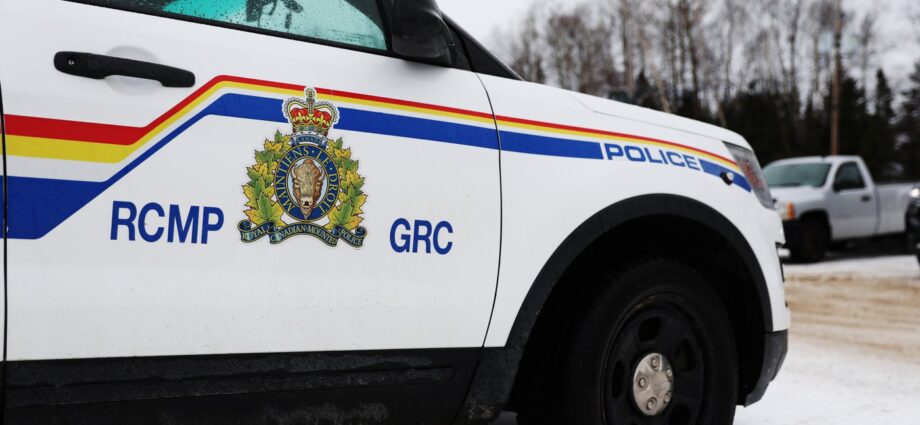
By Heidi Atter, Local Journalism Initiative Reporter, The Independent
March 6, 2025
By the end of this week, Newfoundland and Labrador RCMP hopes officers in all Labrador communities will be wearing body-worn cameras, as the technology is rolled out throughout the province and country.
“This is a very valuable tool. We’ve seen a lot of benefits, including de-escalation,” says Cpl. Jolene Garland, media relations officer with the Newfoundland and Labrador RCMP. “You’re attending a call for service, you’re announcing where it’s applicable—where you can—that a body-worn camera is in use. It certainly has been an effective tool at de-escalating tense and high pressure situations.”
The cameras are intended as an accountability tool for both police and the public, Garland explains, because they offer an unbiased view of what happened between police and the public. RCMP are already using the cameras in most communities, and the equipment is expected to arrive in Natuashish, the final Labrador community, this week.
The body-worn cameras are a welcome sight for Erin Broomfield, the Nunatsiavut government’s regional justice services manager. “I think it’s going to be a good impact for our people in the Nunatsiavut region especially,” she says. “I think it will lead to more transparency between RCMP and communities, and it’ll help accountability, and hopefully it’ll have a positive impact on police behavior.”
Any Nunasiavimmuit can contact the Nunatsiavut justice team for help in reporting incidents, Broomfield says.The team includes Carolyn Michelin, the Inuit prison liaison for the Labrador Correctional Centre; Julia O’Brien, the sexual violence prevention and outreach counsellor; Lisa Webb, the reintegration and support case manager; and Hilary Blake, the Inuit cultural justice educator
Garland says body-worn camera footage is an “effective tool” when it comes to public complaints of RCMP misconduct. “We have this unbiased tool that will show what actually occurred in the interaction,” she says, adding the cameras should also increase public trust in the force, “when people know that the recording is taking place and that the officers are accountable for their actions that are going to be captured during the recording.”
Camera may lead to faster case resolutions: RCMP
Each RCMP officer is issued their own personal body-worn camera; they are required to use them for every traffic stop, every call for service, and to turn them on if they come across a situation that may involve a criminal aspect, Garland explains.
Body-worn footage is tagged in the RCMP’s system and can be used in a court as evidence. Tracy Jenkins-Fudge, manager of body-worn cameras for RCMP NL, says there may be more timely resolutions to public complaints and court files as a result, but those impacts will only be seen through time.
If body-worn camera footage expedites court cases, the impact on Inuit in Labrador would be huge, Broomfield says, explaining it can sometimes take three or four years for matters to be heard in court. “That can have a huge negative impact on people’s lives when they’re waiting for their court matters to conclude. It could impact their employment. It could impact them if they’re trying to go to treatment.”
Many treatment centres won’t admit people who have outstanding court matters, and parents fighting for custody of their children are often in limbo waiting for court cases to conclude, Broomfield adds.
No manipulating footage, RCMPsays
At no time can the RCMP manipulate footage that is filmed, Jenkins-Fudge says. “The number one thing here is that no one can ever edit a video.” While some footage can be redacted for court purposes, she says “the original always remains so that it cannot be edited in any way from the phone or from desktop.”
Police officers can use an app on their cell phones to view the footage from the body-worn cameras, Jenkins-Fudge explains, but they can’t edit it, and the original video remains on the camera itself until it’s uploaded into the RCMP’s cloud-based management system at the end of each officer’s shift.
There is a long and fraught history between Inuit and the RCMP, evidenced by the mistrust many Inuit have of the police force today, Broomfield explains. She hopes the body-worn cameras will help change that by encouraging Inuit to report negative interactions with police.
Subscribe to our newsletter.
“There’s a long history of Inuit not trusting that anything positive will come out of that, or just having fear of [the] RCMP,” she says. “But I think at this time, as we try to work towards reconciliation, that we start to make sure we hold RCMP accountable if they’re causing any harm to our people.”

